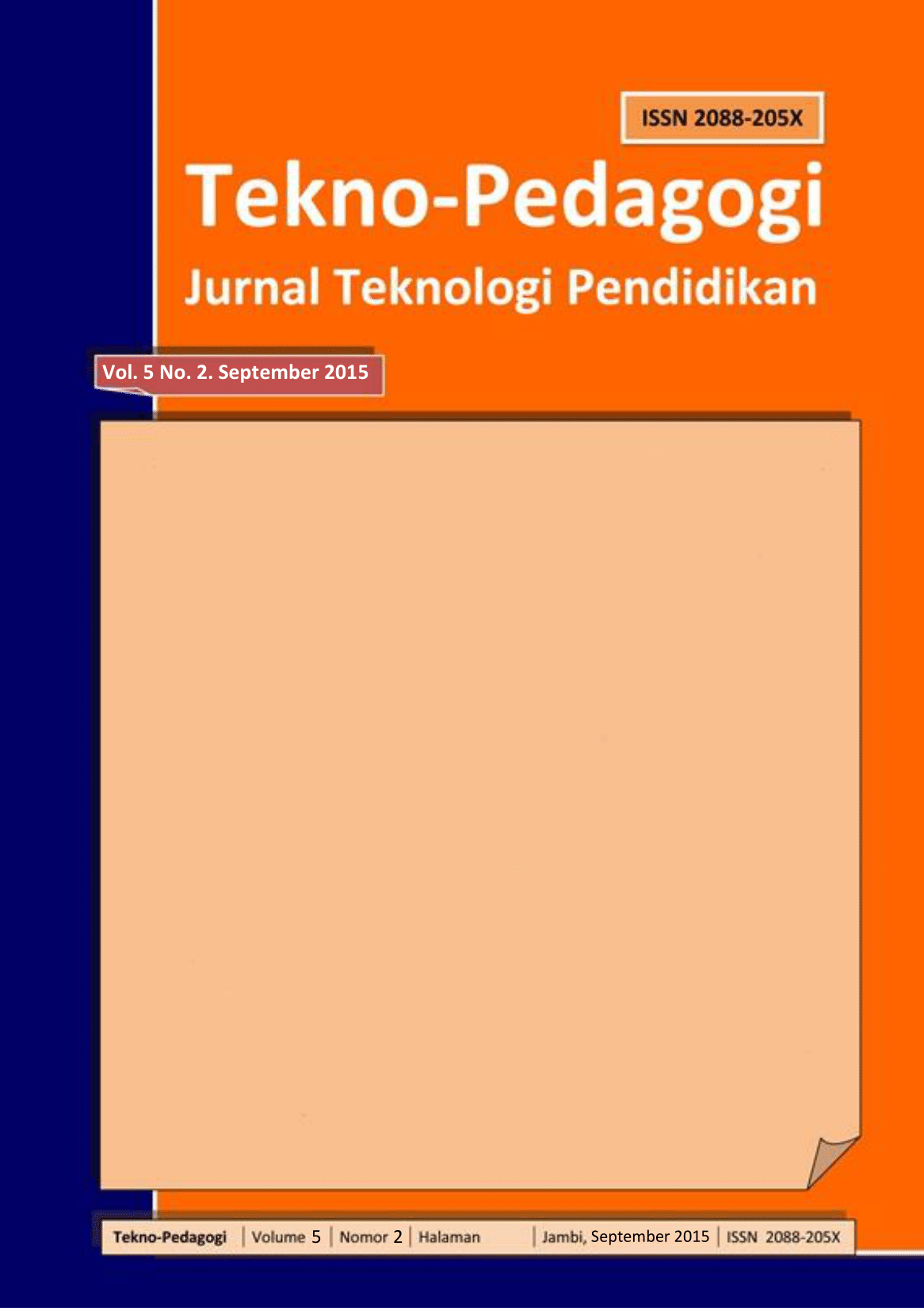Static Electricity Material E-Module Based on a Scientific Approach Using Kvisoft Flipbook Maker Software
DOI:
https://doi.org/10.22437/teknopedagogi.v5i2.7515Keywords:
Electronic Module, Kvisoft Flipbook Maker, Scientific ApproachAbstract
The availability of adequate teaching materials can make it easier for students to study independently and overcome problems that often occur in classroom learning. This research aims to determine students' perceptions of Electronic Modules based on a Scientific Approach using Kvisoft Flipbook Maker Software on Static Electricity Material for the Basic Physics 1 course which has been developed. The research design used is Research and Development (R & D). This research is only limited to the research and development stage. This research was conducted at the Physics Education Study Program, FKIP, Jambi University in March 2018. This research data was obtained by distributing questionnaires to the 2015 Physics Education students of the PGMIPAU class. The research results show that the Electronic Module based on a scientific approach that has been developed has met the feasibility criteria very well in terms of 3 aspects, namely the module appearance aspect, the module presentation aspect, and the module benefits aspect with an average score of 5.68 respectively; 4.87 and 13.45. The average score for all student perception indicators is 49.95 in the very good category.
Downloads
References
Arafah, S., F., Ridlo, S., & Priyono, B. (2012). Pengembangan Lks Berbasis Berpikir Kritis Pada Materi Animalia. Unnes Journal of Biology Education, 1(1), 47–53. https://doi.org/10.1117/12.776759
Branch. (2009). Instructional Design: The ADDIE Approach. London: Springer.
Daryanto. (2013). Menyusun Modul (Bahan Ajar untuk Persiapan Guru dalam Mengajar). Yogyakarta: Gava Media.
Depdiknas. (2006). Panduan Pengembangan Bahan Ajar. Jakarta: Departemen Pendidikan Nasional Direktorat Jenderal Manajemen Pendidikan Dasar dan Menengah Direktorat Pembinaan Sekolah Menengah Atas.
Fachrurazi. (2011). Penerapan Pembelajaran Berbasis Masalah untuk Meningkatkan Kemampuan Berpikir Kritis dan Komunikasi Matematis Siswa Sekolah Dasar. Jurnal Penelitian Pendidikan: hal 76 Kemendiknas. 2010. Panduan Pengembangan Bahan Ajar Berbasis TIK. Jakarta: DirektoratPembinaan Menengah Atas.
Hasanah, Aan. (2012). Pengembangan Profesi Guru. Bandung: Pustaka Setia.
Lesmana, Iwan & Irawan, Dede. (2018). Aplikasi Penilaian Kinerja Dosen Berbasis Android. Jurnal Nuansa Informatika, 12 (2), 51-58.
Majid A. (2005). Perencaan Pembelajaran. Bandung: Remaja Rosdakarya.
Nazeri. (2013). “Penggunaan e-FlipBook dalam Topik Elektrik dan Elektronik: Inovasi dalam Pengajaran Reka Bentuk dan Teknologi PISMP RBT”. Prosiding Seminar Penyelidikan IPG Zon Timur Vol 1, No 1 (2013).
Suarsana. (2013). Pengembangan E-Modul Berorientasi Pemecahan Masalah Untuk Meningkatkan Keterampilan Berpikir Kritis Mahasiswa. Jurnal Pendidikan Indonesia, Vol. 2, No. 2, Oktober 2013 p.226
Sugianto, D., Abdullah, A. G., Elvyanti, S., & Muladi, Y. (2017). Modul Virtual: Multimedia Flipbook Dasar Teknik Digital. Innovation of Vocational Technology Education, 9(2), 101–116. https://doi.org/10.17509/invotec.v9i2.4860
Sugianto, Dony dkk. (2013). Modul Virtual:Multimedia FlipBook Dasar Teknologi Digital. Jurnal INVOTEC, Vol. IX No.2 Agustus 2013 p.110-116
Sugiyono. (2006). Metode Penelitian Pendidikan Pendekatan Kuantitatif, Kualitatif dan R&D. Bandung: Alfabeta.
Umam, Khaiful & Zaini, Imam. (2013). Penerapan Media Digital Dalam Pembelajaran Apresiasi Batik Kelas X Sma Negeri 1 Blega. Jurnal Pendidikan Seni Rupa, 01(1),100-105
Yuliati, L. (2013). Efektivitas Bahan Ajar Ipa Terpadu Terhadap Kemampuan Berpikir Tingkat Tinggi Siswa SMP. Jurnal Pendidikan Fisika Indonesia. 2580-5649-1-SM n. 9, 53–57.
Downloads
Published
How to Cite
Issue
Section
License
Copyright (c) 2015 Rini Aggraini, Patmi Patmi

This work is licensed under a Creative Commons Attribution 4.0 International License.





